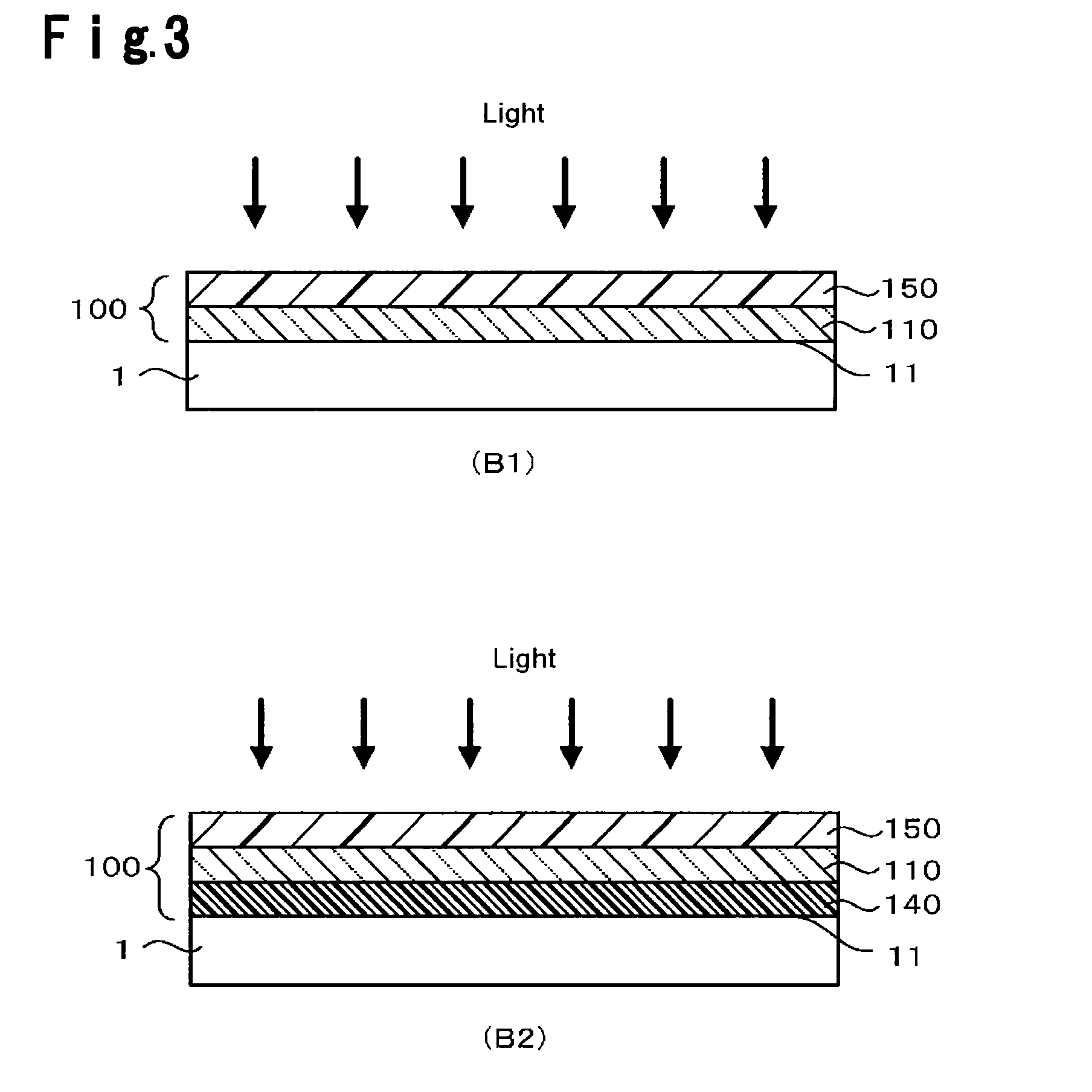Translucent laminated film and solar cell module using it
- Summary
- Abstract
- Description
- Claims
- Application Information
AI Technical Summary
Benefits of technology
Problems solved by technology
Method used
Image
Examples
example 1
[0218]A step of applying coating fluid A to a non-tin surface of a highly transparent float glass (soda lime glass) substrate (100 mm×100 mm, 4 mm in thickness, average transmittance to a light having a wavelength of from 300 to 400 nm: 75.49%, average reflectance by the above (4): 4.15%, the film refractive index by the above (3): 1.52) washed with cerium oxide, followed by spin coating at 500 rpm for 60 seconds for uniformalization, and firing the coating film at 200° C. for 10 minutes, was repeatedly carried out 10 times to form a substrate front side wavelength conversion film (hereinafter referred to as “first wavelength conversion film”) having a thickness of 1,000 nm, which converts a light in the first wavelength region into a light in the effective wavelength region. Then, coating fluid I was applied on the first wavelength conversion film, followed by spin coating at 500 rpm for 60 seconds for uniformalization, and the coating film was fired at 650° C. for 10 minutes to fo...
example 2
[0220]A step of applying coating fluid D to the non-figured surface of a highly transparent figured glass (soda lime glass) substrate (100 mm×100 mm, 3.5 mm in thickness, average transmittance to a light having a wavelength of from 300 to 400 nm: 76.44%, average reflectance by the above (4): 4.16%, film refractive index by the above (3): 1.52) washed with cerium oxide, followed by spin coating at 500 rpm for 60 seconds for uniformalization, and firing the coating film at 200° C. for 10 minutes was repeatedly carried out four times to form a first wavelength conversion film having a thickness of 400 nm. Then, coating fluid I was applied on the first wavelength conversion film, followed by spin coating at 450 rpm for 60 seconds for uniformalization, and the coating film was fired at 650° C. for 10 minutes to form an antireflection film having a thickness of 120 nm.
[0221]Further, coating fluid G was applied on the figured surface of the highly transparent figured glass substrate having...
example 3
[0223]A step of applying coating fluid E to the non-figured surface of the same highly transparent figured glass substrate (100 mm×100 mm, 3.5 mm in thickness) as in Example 2 washed with cerium oxide, followed by spin coating at 500 rpm for 60 seconds for uniformalization, and firing the coating film at 200° C. for 10 minutes was repeatedly carried out five times to form a first wavelength conversion film having a thickness of 500 nm. Then, coating fluid I was applied on the first wavelength conversion film, followed by spin coating at 450 rpm for 60 seconds for uniformalization, and the coating film was fired at 650° C. for 10 minutes to form an antireflection film having a thickness of 120 nm. A polycrystalline silicon solar cell was bonded to the figured surface side of the obtained translucent substrate provided with a coating film, whereupon the performance of the solar cell was evaluated. Physical properties of the film and the solar cell performance are shown in Table 1.
PUM
 Login to View More
Login to View More Abstract
Description
Claims
Application Information
 Login to View More
Login to View More - R&D
- Intellectual Property
- Life Sciences
- Materials
- Tech Scout
- Unparalleled Data Quality
- Higher Quality Content
- 60% Fewer Hallucinations
Browse by: Latest US Patents, China's latest patents, Technical Efficacy Thesaurus, Application Domain, Technology Topic, Popular Technical Reports.
© 2025 PatSnap. All rights reserved.Legal|Privacy policy|Modern Slavery Act Transparency Statement|Sitemap|About US| Contact US: help@patsnap.com



